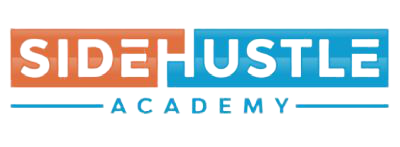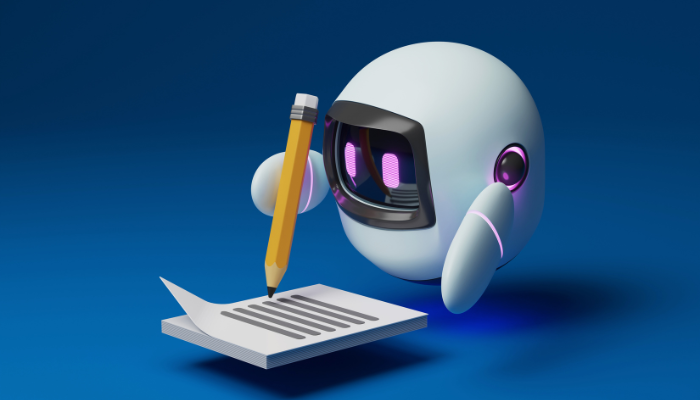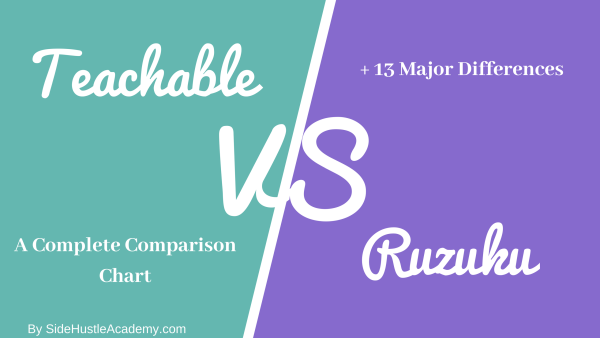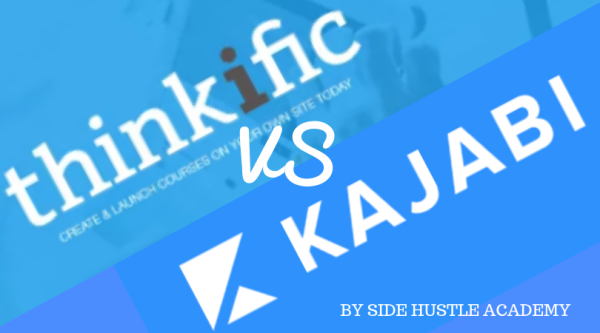How to Create an Online Course with AI: A Guide
Learning how to create an online course with AI can feel like navigating a labyrinth.
The idea of joining tech and teaching may appear overwhelming, especially for those unfamiliar with technology. But here’s the catch…
You don’t need to be a programming whiz or have advanced technical skills to harness the power of AI in creating engaging practical online courses. It’s quite the opposite.
Taking advantage of AI for your online course creation could be what separates you from other educators in this digital age. If you’re uncertain about leveraging AI tools effectively, fear not!
We know that stepping into uncharted territory can be intimidating.
A scenario comes to mind – one educator shared their apprehension about integrating AI into their teaching methods due to a lack of understanding and fear they wouldn’t get it right.
Related Article: Content at Scale Review: Create Content Fast & Cheap (2023)
This is understandable! It is only natural to be hesitant when attempting something unfamiliar.
But let us assure you…
Successfully creating an online course with artificial intelligence doesn’t require being a tech guru; all it takes is willingness and determination. You can do this!
Understanding Artificial Intelligence and Its Role in Content Creation
The concept of artificial intelligence (AI) can be daunting, but its application in content creation is relatively straightforward. AI can revolutionize how we generate ideas, create outlines, research, and refine our text.
A closer look at this technology will reveal many applications transforming industries across the globe – from self-driving cars to dating site algorithms.
But let’s focus on one aspect where it shines: creating online courses with AI.
Artificial Intelligence Beyond Robotics
You might picture robots when you think about AI. However, AI goes beyond robotics.
For instance, voice recognition software utilizes machine learning to understand different accents or speech patterns over time – enhancing their accuracy drastically.
This kind of tech isn’t just cool; it’s also convenient.
It opens doors for well-designed online training programs by efficiently transcribing lectures into a readable format, making course development less cumbersome while maintaining high-quality standards.
Digging Deeper Into Machine Learning And Content Generation
In terms of content generation, though? That’s where the real excitement lies.
Natural language processing (NLP), an element within artificial intelligence technology, allows machines to understand human language nuances and craft coherent sentences similar to us humans, making them valuable allies for any creator out there.
Predictions suggest that by 2025 most new digital content will have been created using advanced GPT-3 powered tools like Jasper.ai.
These tools leverage machine learning technologies which could significantly impact various sectors, including your side hustle academy course creation process.
The Power of AI in Creating Online Courses
Artificial intelligence (AI) is more than just a trendy term.
AI can be a groundbreaking tool for revolutionizing the development of online courses, making them quicker and more effective.
Using AI to Generate Course Outlines
A well-designed online training strategy begins with creating a solid outline. Here’s where artificial intelligence technology can be utilized to its fullest potential.
Tools like Thinkific’s built-in outline generator, powered by advanced algorithms, offer suggestions for headings and subheadings based on your topic.
This ensures your curriculum follows logical progression while covering all essential points related to your subject matter.
Setting you up nicely as you move into detailed content development phases such as script writing or video production.
The Role of AI Writing Assistants
Jasper.ai is one example of an AI writing assistant that uses language modeling techniques derived from transformers. These models generate human-like text by predicting what word should come next based on previous words within a sentence.
In addition to speeding up the drafting process through automated capabilities, Jasper also helps refine drafts suggesting improvements, whether grammatical corrections or stylistic enhancements improving readability.
This makes tools like Jasper’s invaluable during both the initial draft stages and final editing rounds before publishing any module within an online training program.
Leveraging such powerful aids allows instructors greater flexibility when designing their courses, enabling them to focus heavily on instructional design elements without worrying about mundane tasks associated with traditional text composition methods.
Limitations of AI in Content Creation
Though AI technology has the potential to revolutionize content creation, its limitations must be considered.
But, like any tool, there are limitations that we need to consider.
What AI Can’t Do
In terms of creativity and nuance – those little touches that make a piece truly unique or resonate with an audience on a deeper level – this is where artificial intelligence sometimes falls short.
For example, while Learning Studio AI, an advanced AI program, can crunch data faster than any human could hope to, interpreting these results and giving them context-specific meaning is something only humans can provide right now.
This same principle applies to creating online courses; certain aspects require human expertise for optimal outcomes.
Think about understanding learner psychology or adapting teaching strategies based on student feedback.
These tasks necessitate empathy which currently lies beyond the reach of even sophisticated AI tools such as machine learning algorithms.
Beyond just creative flair, though, lies another crucial aspect: quality control checks requiring human intervention.
An NLP (Natural Language Processing)-based writing assistant might be able to generate grammatically correct sentences at lightning speed, but capturing subtleties inherent in language – humor or sarcasm effectively remains elusive thus far for our silicon counterparts.
Strategies for Combining Human Expertise with AI Tools
To get maximum benefits from your course creation process using AI tools requires you to balance leveraging the technological prowess offered by machines and ensuring necessary oversight through your expert judgment.
Supervising Your AI Writing Assistant
Your relationship with your WriterAccess assistant, or whichever similar tool you opt for, should not be one-sided but more collaborative because they’re ultimately designed as aids, not replacements for us humans.
Supervision becomes key here; proofreading generated content thoroughly ensures factual accuracy through manual checks since, despite advancements made, no algorithm is immune from errors, mainly if initially fed incorrect information.
- You’ll find yourself working smarter, not harder, using innovative ways AI plays into crafting engaging educational material, all while maintaining high standards synonymous with a successful online training strategy.
Key Takeaway: While AI offers transformative power in content creation, it’s not a silver bullet. Its limitations lie in capturing creativity, nuance, and quality control checks that require a human touch. For optimal results in online course creation, strike a balance – use AI for its technological prowess but ensure your expert oversight.
The blend of human expertise and artificial intelligence tools can create a powerful synergy in content creation.
You can leverage the power of human knowledge and AI to create enlightening and stimulating courses.
Maintaining Factual Accuracy Through Manual Checks
No matter how advanced our technology gets – there’s one thing we cannot ignore: factual accuracy matters.
Therefore, manual checks remain vital even when using artificial intelligence technology in creating online courses. Cross-verifying facts against reliable sources before publishing should never be underestimated.
- Cross-verify information within your course against academic journals or industry reports before publication into the training strategy;
- Frequently update data points, ensuring relevance over time – another area where humans outperform their AI counterparts.
Incorporating Creativity Into the Content Creation Process
Creativity has always been considered a uniquely human trait — something machines still struggle with today.
While AI writing assistants excel at generating ideas based on given inputs, they often lack the nuanced creativity required during certain stages like storytelling, which form part of well-designed online courses’ appeal.
So does this mean we ditch our trusty sidekicks? Not quite.
An intelligent approach would involve leveraging artificial intelligence primarily during the initial phases (like brainstorming topics) while relying more heavily on human input later on (for refining the language used).
This way, man and machine play their parts optimally, making the most out of each other’s strengths without compromising the overall output quality, resulting in a better end product – A winning formula.
Key Takeaway: When creating an online course with AI, it’s essential to blend human expertise for creativity and factual accuracy checks. While AI speeds up the process, careful supervision ensures quality content. Thus, a balanced approach leveraging both man and machine results in superior courses.
Practical Steps to Create an Online Course Using Artificial Intelligence
The journey of creating a comprehensive online course can be significantly simplified with the strategic use of artificial intelligence.
When employed correctly, AI tools can lend their capabilities at every stage – from sparking ideas for your course to refining and polishing the final content.
Starting from Scratch – Brainstorming with Artificial Intelligence
Innovation begins by brainstorming compelling topics that will captivate learners. This is where AI-powered education tools make their mark.
These advanced platforms harness machine learning algorithms to generate relevant suggestions based on your subject area or industry trends.
Beyond generating ideas, these AI programs also offer insights into potential learner needs and preferences by analyzing search patterns or user feedback on similar courses.
Thus enabling you to craft content more effectively toward your target audience’s interests and learning objectives.
Crafting Your Course Outline with Artificial Intelligence
A key component within any well-designed online training strategy is a robust course outline – this crucial step, too, benefits immensely from AI intervention.
Simply inputting basic information about your intended curriculum into an appropriate tool generates a comprehensive structure for your entire program, including sections, subtopics, essential points, and even quizzes and assessments if required.
This saves time and ensures each section logically builds upon the previous one, providing learners with a coherent educational journey through the material presented.
Refining Your Course Content with Artificial Intelligence
The last stages of the creation process involve fine-tuning clarity, coherence and eliminating grammatical and factual errors.
This task could be expedited using artificial intelligence technology like grammar checkers, which automatically detect syntax issues within text-based materials, thereby saving creators valuable time spent proofreading manually.
Moving beyond simple error detection, some sophisticated AI writing assistants can suggest language style and tone improvements.
Ensuring the overall quality of written communication remains high throughout the program, giving students the best possible experience during their digital learning adventure.
Key Takeaway: Leveraging AI tools can streamline the creation of online courses, from brainstorming topics to refining content. These platforms generate relevant ideas, analyze learner preferences, create comprehensive course outlines, and improve language style for an optimal learning experience.
Looking Ahead – The Future Impact Of AI On Online Training Strategy
The realm of AI-powered education is a rapidly evolving landscape.
Staying informed of the latest AI-driven developments and innovations in this field can help to shape our strategies for creating and delivering online courses.
A notable trend on the horizon is adaptive learning platforms that utilize machine learning algorithms to customize course content based on individual learners’ progress, strengths, weaknesses, and preferences.
These adaptive learning platforms aim to heighten engagement levels while enhancing outcomes by providing personalized educational experiences for each student.
Predictive Analytics in Online Education
Moving beyond personalization lies another promising development: predictive analytics. This technology leverages historical data patterns to forecast future behaviors or results.
In an eLearning context, it could mean predicting which students are likely at risk of dropping out or pinpointing areas where learners typically face challenges.
Research has demonstrated that incorporating predictive analytics into virtual classrooms can improve retention rates by facilitating timely interventions when learners struggle with coursework.
Natural Language Processing (NLP) Enhancements
An additional area worth monitoring involves Natural Language Processing (NLP) enhancements. NLP allows machines to understand human language more accurately by interpreting semantics syntaxes within text-based interactions during an online course session.
As NLP continues to evolve thanks to advanced artificial intelligence tools, it will be possible for AI programs to generate better quality content and provide nuanced feedback, assessments, and discussions within a virtual classroom setting.
Thus creating a well-designed training strategy tailored to every learner’s needs.
The Continued Importance of Human Expertise
No matter how sophisticated artificial intelligence becomes, there are certain aspects it cannot replicate entirely, such as human expertise required for creativity, critical thinking, and emotional intelligence, among others.
For instance, while an AI writing tool might help streamline the creation process by generating ideas, organizing thoughts, and even drafting initial versions, final edits still require a discerning eye of an expert to ensure factual accuracy, relevance, and originality of the content.
Despite the impressive advancements in technology, it is essential to remember that humans are still needed for creating and delivering compelling learning experiences, mainly when producing high-caliber and stimulating courses.
Key Takeaway: AI is revolutionizing online education with adaptive learning platforms, predictive analytics, and Natural Language Processing enhancements. However, despite AI’s growing capabilities in course creation and delivery, the human touch remains crucial for creativity, critical thinking and emotional intelligence.
FAQs on How to Create an Online Course With Ai
How can I create an online course with AI?
AI tools like Jasper.ai or WriterAccess can generate ideas, compose outlines, conduct preliminary research, and refine your course content.
How do I create an online course?
Create a plan, define learning objectives, and develop the content in manageable sections.
Use interactive elements for engagement, and always remember to review and revise before launching.
What is the best AI for course creators?
Jasper.ai is popular because its language modeling capabilities efficiently generate human-like content.
Can I use ChatGPT to create a course?
Absolutely. ChatGPT can help automate responses during live training sessions or assist in creating engaging written material for your courses.
Conclusion
Artificial intelligence is revolutionizing how we create content, from voice recognition to online course creation.
With AI tools like Jasper.ai and WriterAccess, you can generate ideas, craft outlines, conduct preliminary research, and refine your text for an online course.
However, it’s important to remember that while these AI tools are potent aids in creating courses efficiently, they still require human supervision for creativity and quality control checks.
The best strategy combines the power of artificial intelligence with human expertise: supervising generated content closely, providing clear guidance to your AI tool on desired tone or style, and manually ensuring factual accuracy.
You’ve also learned about a step-by-step process of using AI technology, all through brainstorming sessions until final edits when crafting an online course.













